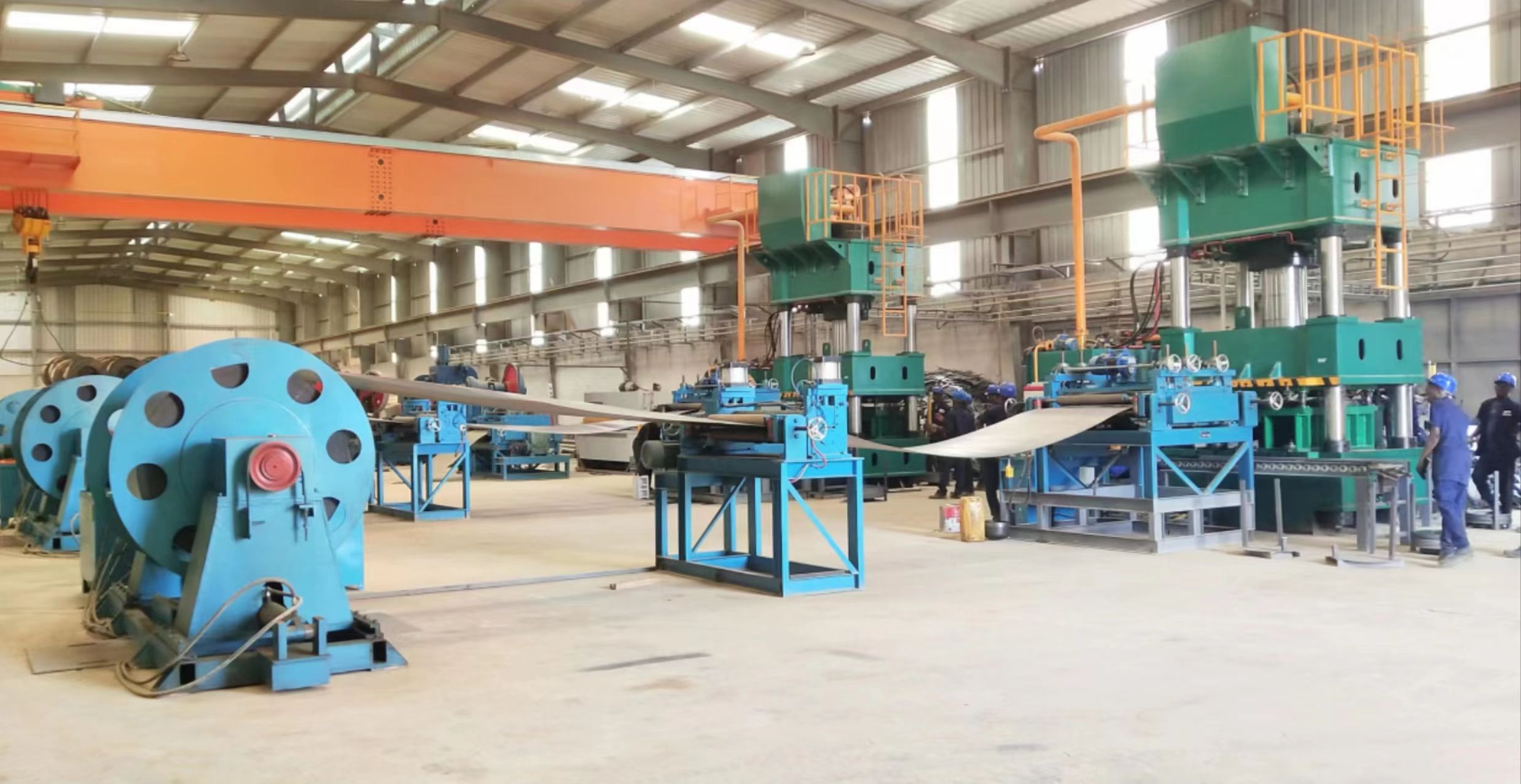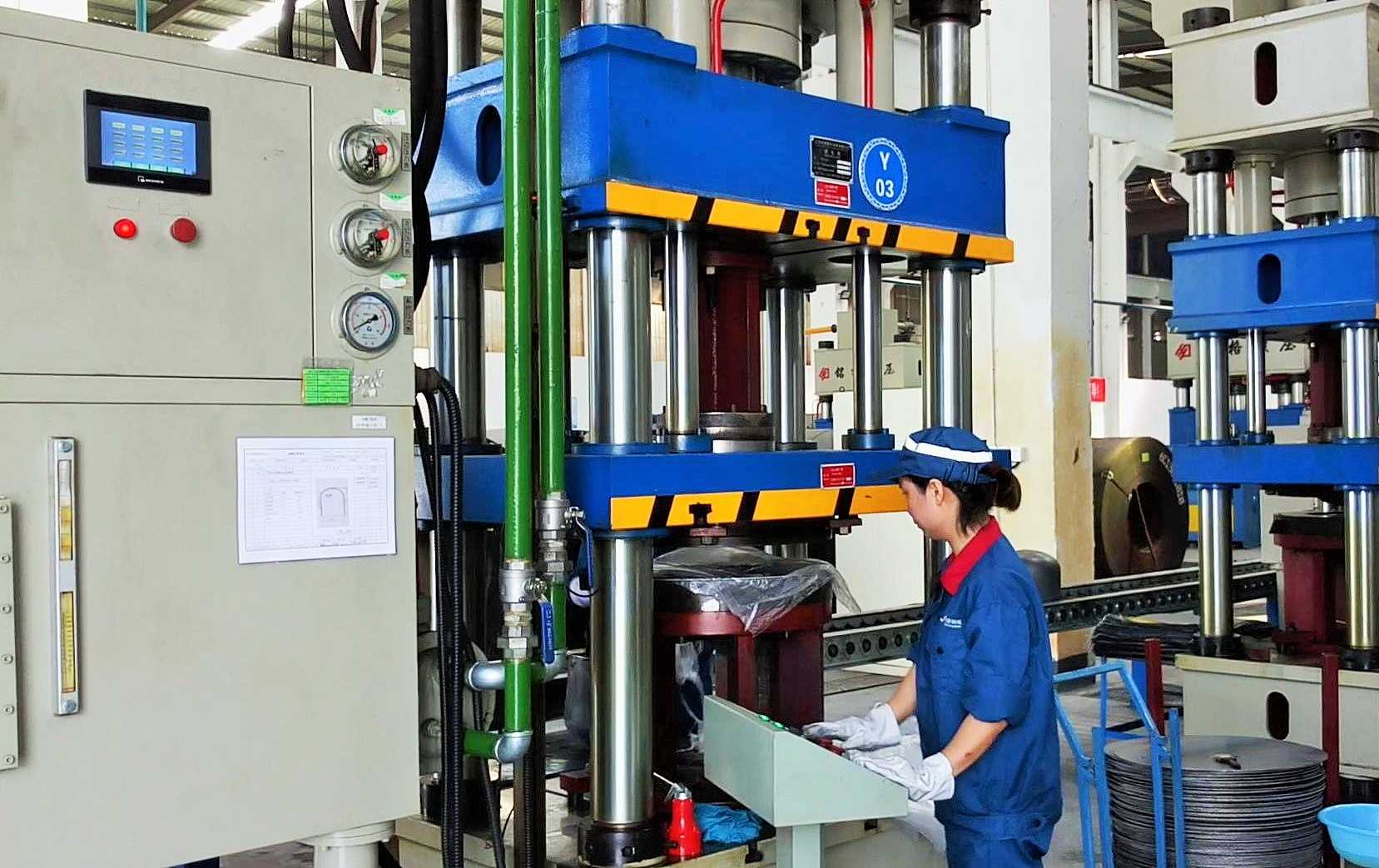The pipe-bending machine is a sophisticated piece of industrial equipment, crucial in various manufacturing processes. This machine is designed to transform round tubes into precise, uniform rings through a meticulously engineered procedure involving adjustable guide wheels and cutting equipment. This article delves into the workings of a pipe bending machine, highlighting its core components, operational mechanisms, and the importance of precision in achieving desired outcomes.
The Role of Semi-Arc Round Wheels
At the heart of the pipe-bending machine are two rows of semi-arc wheels. These wheels are essential in the bending process, as they move relative to each other, exerting controlled pressure on the round tube. The movement of these wheels is carefully synchronized to ensure that the tube is guided smoothly through the bending process without causing deformation or damage.
The semi-arc round wheels perform a dual function: guiding the tube forward and applying the necessary force to bend the tube into a circular shape. The precision in the design and movement of these wheels is critical, as it determines the consistency and accuracy of the final product.
The Adjustable Guide Wheel: Precision and Versatility
An adjustable guide wheel is another critical component of the pipe-bending machine. This guide wheel ensures that the round tube is bent to the desired diameter. The adjustability of the guide wheel allows operators to modify the diameter of the rings being produced, offering versatility in manufacturing different sizes of rings from the same machine.
The guide wheel’s role is not just limited to guiding the tube; it also stabilizes the tube during the bending process, ensuring that the force applied by the semi-arc round wheels results in a smooth, even bend. The ability to adjust the guide wheel is a key feature that enhances the machine’s versatility, allowing it to produce rings of varying diameters with high precision.
The Cutting Process: Precision and Efficiency
Once the round tube has been successfully bent into a ring, the next step involves cutting the rolled side-by-side rings into individual units. This is where the cutting equipment comes into play. The cutting process must be executed with extreme precision to ensure that each ring is uniform in size and shape, meeting the required specifications.
The cutting equipment is typically integrated into the pipe-bending machine, allowing for a seamless transition from bending to cutting. The precision of the cutting process is crucial, as any deviation can result in rings that do not meet quality standards. High-quality cutting equipment ensures that the rings are separated cleanly and accurately, ready for their intended application.
The Importance of Precision in Pipe Bending
Precision is a fundamental aspect of the pipe-bending process. Each component of the machine, from the semi-arc round wheels to the adjustable guide wheel and cutting equipment, is designed to work in harmony to produce rings with exacting standards. The ability to consistently produce rings with uniform dimensions is critical in industries where these components are used, such as construction, automotive, and aerospace.
The pipe-bending machine must be operated by skilled professionals who understand the importance of precision and the intricacies of the machine’s operation. Proper maintenance and calibration of the machine are also essential to ensure that it continues to produce high-quality rings over time.

Maintenance and Optimization of Pipe-Bending Machines
To maintain the efficiency and precision of a pipe bending machine, regular maintenance, and optimization are essential. These practices ensure that the machine continues to operate at its peak performance, delivering consistent results in the production of round tube rings. In this section, we will explore the key aspects of maintaining and optimizing a pipe-bending machine.
Regular Inspection and Calibration
One of the most important aspects of maintaining a pipe bending machine is regular inspection and calibration. Over time, the components of the machine, such as the semi-arc round wheels and the adjustable guide wheel, can experience wear and tear. This can lead to deviations in the bending process, resulting in rings that do not meet the required specifications.
To prevent this, operators should conduct regular inspections of all moving parts, looking for signs of wear, misalignment, or damage. Calibration of the machine should also be performed periodically to ensure that the bending and cutting processes are still within the desired tolerances. This practice not only extends the lifespan of the machine but also ensures the continued production of high-quality rings.
Lubrication and Cleaning
Proper lubrication is crucial for the smooth operation of the pipe-bending machine. The moving parts, including the semi-arc round wheels and the guide wheel, require regular lubrication to reduce friction and prevent overheating. This helps to maintain the precision of the bending process and prevents excessive wear on the machine components.
In addition to lubrication, the machine should be kept clean and free of debris. Dust, metal shavings, and other contaminants can accumulate on the machine’s surfaces and moving parts, potentially causing damage or affecting the accuracy of the bending process. Regular cleaning of the machine helps to prevent these issues and ensures that it remains in optimal working condition.
Upgrading Components and Technology
As technology advances, so do the capabilities of pipe-bending machines. Upgrading the components of the machine, such as the cutting equipment or the control system, can significantly improve its performance and precision. Modern control systems, for example, allow for greater automation and accuracy in the bending and cutting processes, reducing the likelihood of human error.
Investing in upgraded components can also increase the versatility of the machine, allowing it to produce a wider range of ring sizes and shapes. This can be particularly beneficial in industries where the demand for customized products is high. Operators should stay informed about the latest advancements in pipe-bending technology and consider upgrading their machines when appropriate.
Training and Skill Development
Even the most advanced pipe-bending machine requires skilled operators to achieve the best results. Proper training is essential to ensure that operators understand the intricacies of the machine and can perform the necessary maintenance and calibration tasks. Regular training sessions can also help operators stay up to date with new techniques and technologies, further enhancing the machine’s performance.
In addition to technical skills, operators should also develop an understanding of the materials being used in the bending process. Different types of round tubes, such as those made from stainless steel, aluminum, or copper, have varying properties that can affect the bending process. By understanding these material characteristics, operators can adjust the machine settings to achieve the best possible results.
Monitoring and Quality Control
To ensure that the pipe-bending machine consistently produces rings that meet the required specifications, a robust monitoring and quality control system should be in place. This involves regularly checking the dimensions and quality of the rings produced by the machine and making any necessary adjustments to the machine settings.
Advanced monitoring systems can be integrated into the machine, allowing for real-time tracking of the bending and cutting processes. These systems can detect any deviations from the desired specifications and alert the operator, enabling immediate corrective action. Implementing a strong quality control process helps to minimize waste and ensures that the final products meet industry standards.
Conclusion
The pipe-bending machine is a vital tool in modern manufacturing, offering the capability to produce precise, uniform rings from round tubes. Its operation relies on a combination of well-engineered components, including semi-arc round wheels, adjustable guide wheels, and cutting equipment. The precision of each step in the process is crucial to achieving the desired outcome, making the pipe-bending machine an indispensable asset in industries where accuracy and consistency are paramount. Proper operation and maintenance of this machine are essential to ensure its longevity and the quality of the products it produces.




